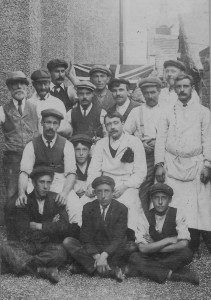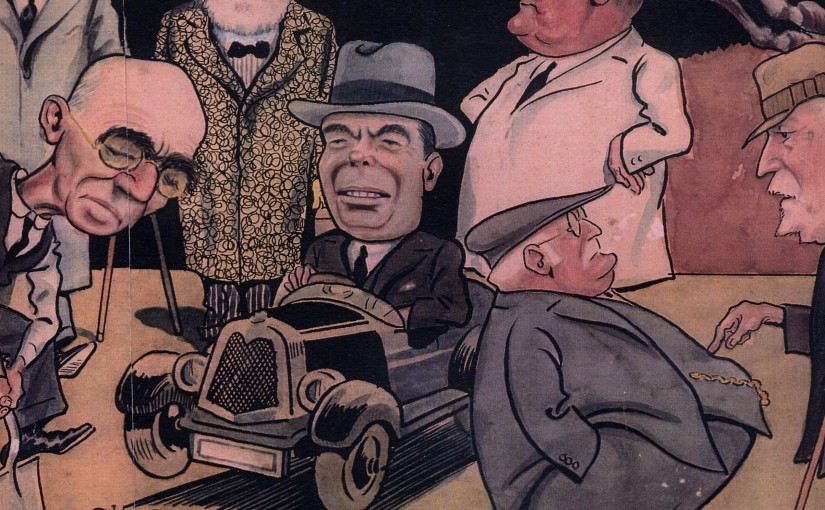The Rise and Fall of Rye’s Industry and Commerce
Part 2
By Arthur Woodgate
In the nineteenth century, on a ridge of high ground, in the part of greater Heathfield known as Punnetts Town, there were two windmills. One ground the corn, but it is the other, the one that worked wood working machinery, that this piece of history is concerned.
At this time old Thomas Ellis worked the timber mill. He had several sons he had trained into the carpentry craft. I’m now to go into a story that many will believe made up, but the brothers Ellis were my great Uncles and what I’m about to relate is what has been handed down to me through the family.
It was years before Lloyd George and his introduction of any thought of National Insurance, so when these two young men had no work, they had no money so they went off to look for work like a couple of tramps. Except they did have two rusty old bikes. I’ve no idea how they lived, but they did eventually reach Greatstone. As the Punnetts and all their relations were baptists, I have an imagination how they might have managed, the non-conformists were very strong in those days in this country so any of the chapels would have befriended them. Anyway having got to Greatstone they were offered a contract to pitch a roof on a new hotel being built, this they took on. Then they were given the job to pitch a roof on the Rye Monastery. From then on they got jobs in and around Rye and New Romney and eventually started employing men. And so formed the company of “Ellis Brothers” of Rye and New Romney, employing up to a hundred men in each town. William took charge in New Romney and George in Rye. Both married Punnetts Town ladies and had fairly large families. They brought with them many Punnetts town names. I don’t know a lot about the New Romney area, except I knew one or two of the individual persons including another brother named Joe who was the son of another original brother called Joe. He carried on a small carpenter business from New Romney, and he was quite a nice man. On the other hand, they brought in another brother to Rye, his name was Ebenezer and of course everybody called him “Old Ebby”, and he was something of a tyrant.
I said I would say a bit more about “Wright and Pankhurst” furniture store when I got to reporting about its builder and that is where I am now. It was “Ellis Brothers”, and old Ebby was foreman. They must have brought in bricklayers from a very large area because of the mass of brickwork.
‘Old Ebby’ was foreman and it was said he used to stand at the top of the ladder as it went up from scaffold to scaffold, and find fault with everything and everybody, so as “Wright and Pankhurst” were still selling coal, the lads nailed a coal sack to a stick and fixed it to the top of the ladder so he had a black flag beside him.
Just for fun, they left a deliberate mistake in the bonding of the brickwork. It needs bricklayers to see it and even then it takes a long time to find it. I don’t think ‘Old Ebby’ ever saw it.

In due course, the brothers moved their parents into Rye. They lived in Waterloo Place at first, but when father died they built a new house for mother in Winchelsea Road. They brought in George’s family, including the Eastwoods, one of them who was Mrs George’s Brother. His name was Jessie Eastwood and he was quite an interesting character. He was the only man I ever saw carrying two pails of mortar on yokes up a ladder. One of the younger Eastwoods called Mons, was in charge of the joiners machine shop. But the bigger woodworking was done at New Romney where most of the window and door frames were made after they dissolved the partnership. I didn’t work for New Romney very much or for very long, and didn’t know much about them, except that their big joinery was burned down, and the boss, William Ellis at that end didn’t believe in insurance companies. He built his own special account and so had no bother in having his property replaced. I did know quite a bit about George at the Rye end. My paternal Grandmother was sister to the brothers Ellis, she married the village drunk and George promised my Grandfather Woodgate a good job if he would give up drinking alcohol. He wouldn’t do it in order to help his sister who now had eleven children as well as a drunken husband. George brought in her two oldest boys and trained them into building crafts.
My father was one of these and he married into an old Rye family, “The Batchelers”. In 1909 “Ellis Brothers” got the contract to build a new baptist chapel. The ship building industry was sinking fast by now. There was a launch the day I was born and I saw two more whilst I was at school, but that was the end and those ship builders who had not already set sail to other ship yards, were drifting across to help build houses etc. So it was that some were now part of Ellis Brothers. One of these was very amusing to work with. He was one of two brothers named Hayward, his name was Bert and he was a natural ventriloquist. So one could be working shoulder to shoulder with him and you might hear somebody shouting loudly across the site at you. No one would be there, it was Bert! He was in the Chapel Team. as a young man, but he was an elderly man by the time I was on site with him, but he still had a great sense of humour. It was rumoured around town that Ellis Brothers had bought a selling out builder called “Harvey” and giving it to Bill Breeds who was till them a general foreman they thought him too good to work for someone else. I have no proof of this but when I was being apprenticed by W.E Breeds I often was working off scaffold boards with Harvey stamped on the sides. How Ellis Brothers got to use the Crown Field and the ceramic store, I don’t know but use them they did. The whole complex became their head quarters with stores, joinery, plumbing and paint shops. They built a brick incinerator, which seemed never to go out and they didn’t seem to mind towns people walking through and throw rubbish in as they passed. Quicklime was used in those days to make mortar, so they kept a store in the crown field, and they had mortar made and stored there. Making mortar with quicklime is a very tricky job, because as a drop of water is added it gets very hot and men working with it had to ware mole skin trousers, to prevent the splashes made by the Larry and Shovel burning their legs.
They kept the dry quicklime in a shed in Crown Field. A leak in its roof wet the lime which got so hot it set the shed on fire.

If we put the old Rye firm of G. Burnham and Sons with Ellis, Breeds and Burnham, we had a building force that could have built anything anywhere in the world. But suddenly it was gone and all that is left is the name Ellis Brothers over the funeral parlour in the crown field. But the now owner is not an Ellis, nor; as far as I known, anything to do with them, so that is the end of Rye’s great builders! Killed I expect by the great international congloberates and developers.
